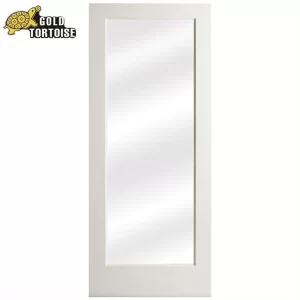There are several different types of security doors available, each offering varying levels of protection and features. Here are some common types of security doors:
1. Solid Core Doors: These doors are made of solid materials, such as metal or hardwood, and provide a high level of security. They are resistant to forced entry and offer durability and strength.
2. Steel Doors: Steel doors are known for their strength and toughness. They are constructed from heavy-gauge steel and are highly resistant to physical attacks. Steel doors often have reinforced frames and multiple locks, providing enhanced security.
3. Fiberglass Doors: Fiberglass doors are made of a composite material that is both durable and resistant to weather conditions. While they are not as strong as steel doors, they still offer good security and are difficult to break or kick in.
4. Security Screen Doors: These doors feature a metal mesh screen that provides an extra layer of protection. Security screen doors allow for ventilation while keeping intruders and insects out. They are highly resistant to cutting or tampering.
5. High-Security Doors: High-security doors are specifically designed to withstand extreme physical attacks. They incorporate advanced security features such as reinforced frames, multiple deadbolt locks, impact-resistant materials, and additional measures like bullet resistance or biometric access control systems.
6. Access Control Doors: These doors are equipped with advanced access control systems to regulate entry. They often incorporate electronic locks, key cards, keypads, or biometric scanners to restrict access and enhance security.
7. Blast-Resistant Doors: These doors are designed to withstand high-pressure and explosive forces. They are commonly used in sensitive areas such as government buildings or high-risk environments.
8. Bullet-Resistant Doors: Bullet-resistant doors are constructed with materials that can withstand ballistic attacks. They are often used in locations where there is a higher risk of firearms-related threats, such as banks or government facilities.
It’s important to consider your specific security needs and consult with security professionals or manufacturers to determine the most suitable type of security door for your situation. Different doors have different strengths and weaknesses, and the level of security required may vary depending on factors like location, building type, and threat assessment.







